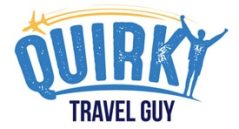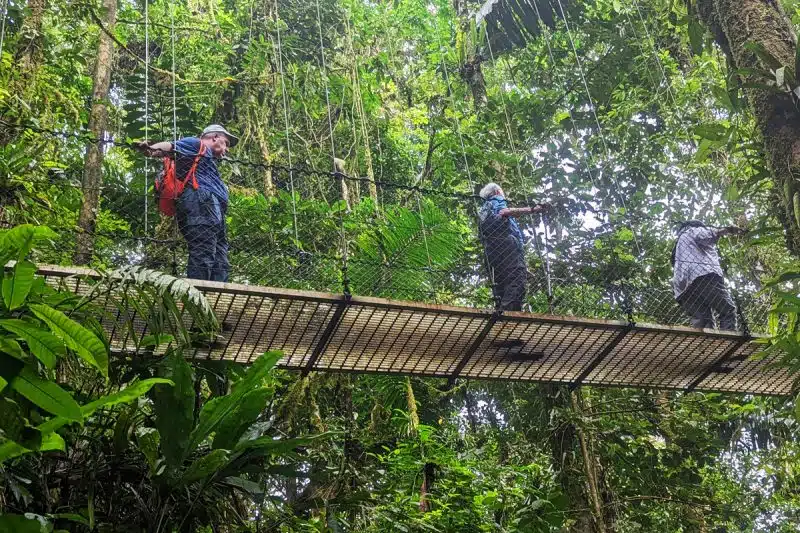Did you know that about 60% of all US national park territory is in Alaska? The area of the official eight national parks in Alaska adds up to 30+ million acres!
Five of those parks are inaccessible by road and require an air taxi or a boat. Two parks are so remote that they’re above the Arctic Circle.
If you’re attempting to visit all 63 US National Parks, you’ll have to work around these challenges to set foot inside each park.

As one of the few travel bloggers who has visited all eight of these parks, I can provide insight on how to get there and what to do when you’re inside each park.
Eager to check them out yourself? Let’s go over the eight NPs in more detail.
About the Eight National Parks in Alaska
Alaska’s collection of eight national parks ranks second in the U.S., behind only California, which has nine.
Up until 1980, Alaska only had one official national park — Denali, which obtained its status in 1917.
On December 2, 1980, Gates of the Arctic, Glacier Bay, Katmai, Kenai Fjords, Kobuk Valley, Lake Clark, and Wrangell-St. Elias all joined the national park system as part of the Alaska National Interest Lands Conservation Act, signed by President Jimmy Carter.
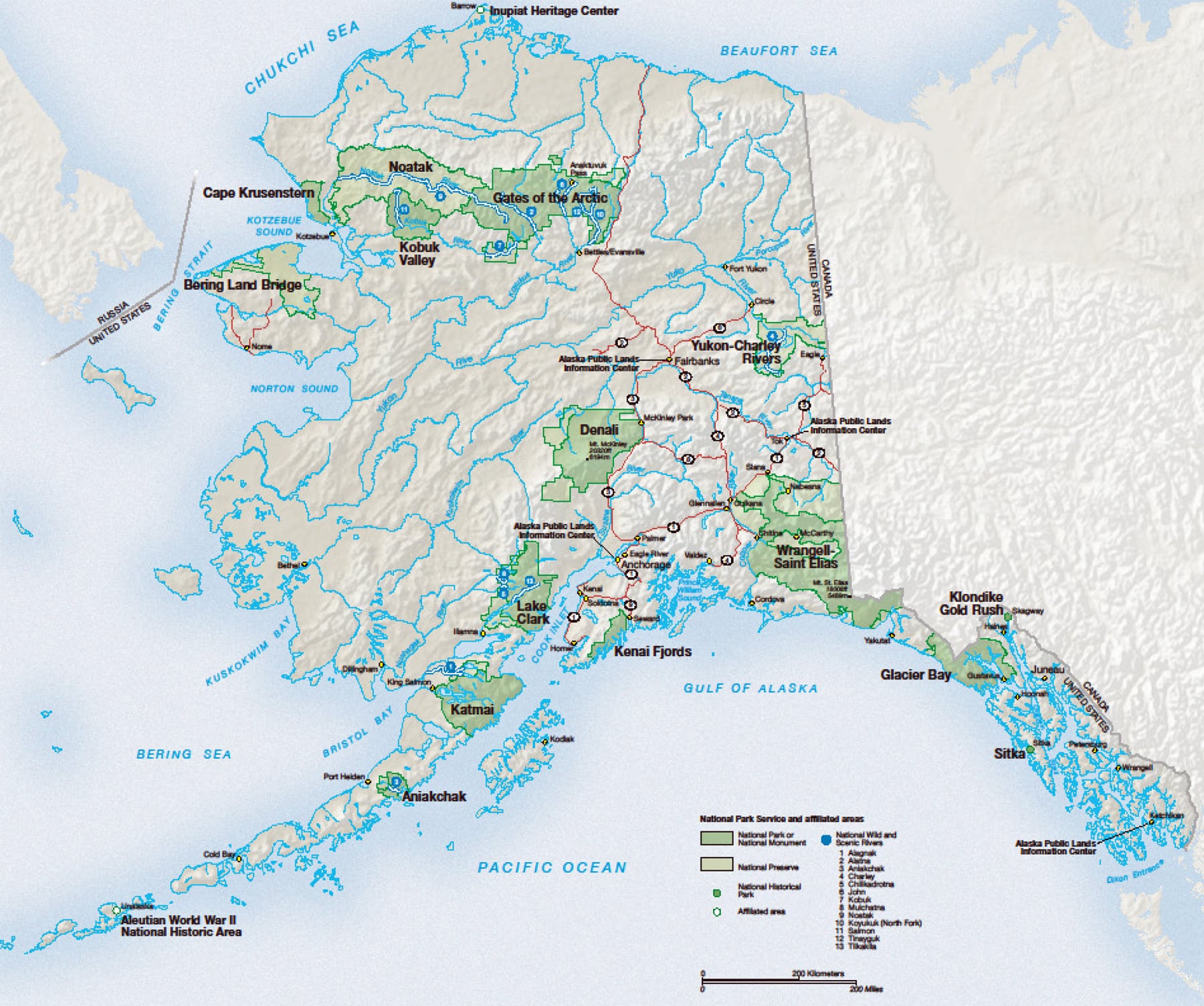
What’s the best time to visit these national parks? In almost all cases, the answer is summer. Alaska gets too much snow during winter, and the bad weather can make flying in bush planes very difficult.
Going between June and September offers the best opportunity to see as much as possible without weather delays — although there are never any guarantees.
Which of these national parks can you drive to? Very few, actually. You can easily drive to Denali and Wrangell-St. Elias.
It’s possible to drive to the edge of Kenai Fjords and Glacier Bay as well, though both parks are best viewed from water via cruise or tour boat.
Gates of the Arctic can technically be reached via a long drive and two-mile hike in from the road, but few visitors opt for this challenging method of reaching the park.
The others — Kobuk Valley, Lake Clark, and Katmai — require a bush plane or boat to get inside the park boundary.
Let’s go over each of the Alaska national parks in detail. All photos by Quirky Travel Guy.
1. Wrangell-St. Elias National Park and Preserve
- Access: Road
- Highlights: Day hikes on the Kennecott trails, rafting, and flightseeing
It’s hard to start this list with any park other than Wrangell-St. Elias. Wrangell-St. Elias is the largest NP in the country, spanning 13.2 million acres. That equals six Yellowstones!
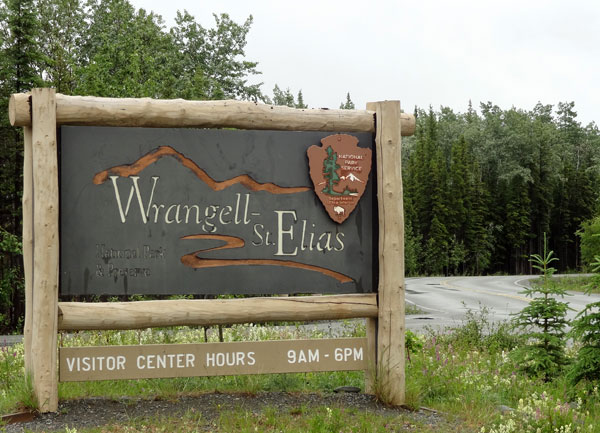
As you might imagine, there’s a lot to do here, from hunting to mountaineering. The visitor center has a lot of fascinating exhibits about the area, including the old mining town of Kennecott, which can be reached by gravel road.
The park is named after the Wrangell and St. Elias mountain ranges, and it has some of the state’s highest peaks.
Unfortunately, I only got a brief taste of what the park has to offer, since I went as a day trip on an Alaska road trip.
2. Glacier Bay National Park and Preserve
- Access: Plane (GST Airport) or boat
- Highlights: Glacier viewing, whale watching, and rainforest walks
Located in Southeast Alaska, Glacier Bay is one of the most scenic Alaska national parks.
Around 90% of the park’s annual visitors (that’s half a million visitors) arrive by cruise ship, which makes perfect sense considering that the park is mostly water.
The typical summer cruise tour starts at the mouth of the Bay and goes into the hearts of the Fairweather Mountains.
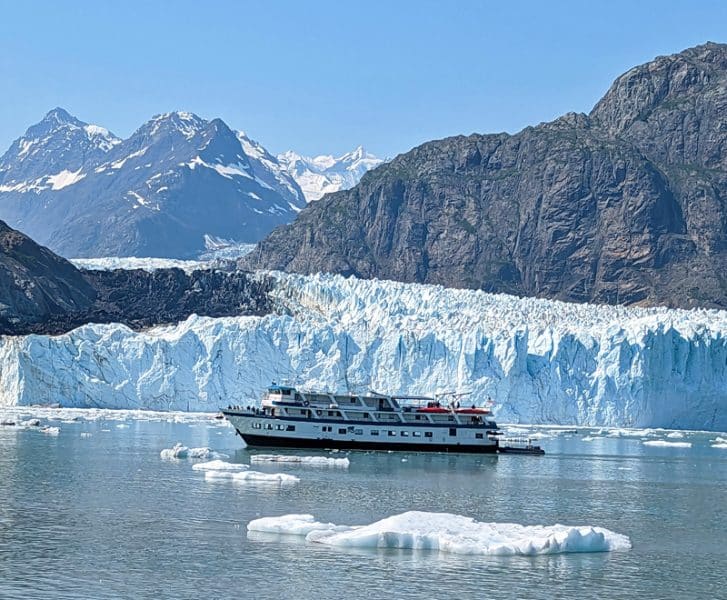
Along the way, you could spot sea otters in the water and brown bears or mountain goats on the shoreline. I saw all of those, in fact!
But the most exciting part of the cruise is seeing tidewater glaciers. The tour gives you about an hour at the face of the glaciers, and you’ll need it. The Margerie Glacier runs for 21 miles!
3. Denali National Park and Preserve
- Access: Road (Around 3 hours from Talkeetna)
- Highlights: Camping, wildlife sightings, and flightseeing
In 1917, Denali Park was created for one main reason: to protect dall sheep from over-hunting. And it worked.
Today, the dall sheep are still hanging out on mountain tops. If you’re lucky, you’ll see one up close during your visit!

Sheep aside, the park has plenty of other wildlife sighting opportunities—grizzlies, caribou, moose, marmots, and more.
Although the park is fairly large, exploring it should be simple. There’s just one road (92 miles long) to follow across the park, first by car and then on a shuttle bus. This makes it easier to group activities. But you still need at least three days here.
Lodges aren’t run by the National Park Service and can be pricey, so consider staying in one of the designated summer campgrounds instead. Savage River is a top choice, and it’s on the paved portion of the road accessible by car.
Alternatively, you could get a permit and stay in one of the backcountry camping units.
Denali is home to the tallest mountain in the U.S., Mount Denali, formerly known as Mount McKinley.
4. Kenai Fjords National Park
- Access: Road or cruise
- Highlights: Whale watching and glacier viewing
Kenia Fjords NP, just outside Seward, stretches over 600,000 acres. About half of this area is covered in snow and ice, so the best way to explore the park is an all-day cruise.

During the cruise, you’ll likely spot humpback whales (or their tails, at least) and possibly orcas as well. Most people go for the whales but end up in awe at all the glaciers, bald eagles, and sea lions.
During winter, they don’t plow the Exit Glacier area. This means that hiking the Harding Icefield trail would be extremely hard. Instead, the area is mostly used for cross-country skiing, dog sled tours, and fat bike riding.
Moose roam around, too. If you see one, stay 25 yards away. They’re not aggressive, but they need their personal space!
5. Katmai National Park and Preserve
- Access: Floatplane or water taxi
- Highlights: Wildlife viewing
The Katmai National Monument was established to protect the volcanic landscape left by the 1912 eruption of the Novarupta dome, now known as the Valley of Ten Thousand Smokes.
The main attraction, though, is Brooks Camp. Brooks Falls is a hub for bear viewing, especially in July when the river is full of salmon. Viewing platforms allow guests to get within 50 feet of dozens of bears as they feed on salmon in the river.

During the winter, the grizzly bears are lazy, fat, and harder to spot. The few that are spotted can make it to the Fat Bear leaderboard. Yup, there’s an annual tournament for choosing the chunkiest bear in the park!
Kodiak Island is just off the coast, and is another great spot for seeing bears, but it’s technically not part of Katmai NP.
6. Kobuk Valley National Park
- Access: Bush planes
- Highlights: Sand dunes, caribou migrations, and backcountry camping
Sahara-looking dunes in Alaska? It sounds odd, but it’s true. The Great Kobuk Sand Dunes are the largest dune fields in North America.

The dunes aren’t the only impressive thing about Kobuk Valley, either. The park falls above the Arctic Circle, which means all sorts of crazy daylight hours.
That said, visiting the park isn’t easy or cheap. You’ll need to come by small plane. Check out my Kobuk Valley guide if you’re hell-bent on visiting.
I spent two nights camping out here in the middle of nowhere, and was blown away by the natural beauty and the peace and quiet. Kobuk Valley is one of the few national parks with sand dunes.
7. Lake Clark National Park and Preserve
- Access: Plane or boat
- Highlights: Bear viewing and backpacking along the Telaquana Route (5–7 days)
For thousands of years, the Lake Clark area has been home to the Dena’ina people, but it wasn’t called Lake Clark originally. The name was Qizhjeh Vena, which roughly translates to “people gathering place.”
Today, however, fewer than 20,000 people visit the entire 4-million-acre park each year. This easily makes it one of the least visited national parks.
But the low visitor count makes sense when you consider that the park isn’t on the road system and is mainly accessible by small planes from Anchorage (about 120 air miles).

It’s possible to boat to the east side of the park. That would be a great opportunity to explore marine life off the coast, but the weather and tides make it hard to find a boat charter service.
Odds are, you’ll have to fly in, and your main options include planes operating on floats or wheels.
Floatplanes that can land on water will take you to places like Crescent Lake. On the other hand, to visit Silver Salmon Creek, your plane should land on a beach.
Silver Salmon is the place to go for brown bear viewing, but Chinitna Bay (also accessible by planes operating on wheels) is also a good spot. If you’re looking for both brown and black bears, head to Crescent Lake during the salmon run.
8. Gates of the Arctic National Park and Preserve
- Access: Bush planes or hikes
- Highlights: Camping, river floating, and paddling
Believe it or not, a couple of parks see even fewer visitors than Lake Clark. The isolated Gates of the Arctic is one of them, with an average of 30 visitors per day, spread over 8.4 million acres!
So you can imagine how tranquil the park can be. There aren’t even any designated campsites—you just set up your tents anywhere.

If you have enough time, you could hike for miles. There are no established trails to follow, though.
Most people who visit Gates of the Arctic do so on a short day visit, via bush plane. Others fly in, camp for a couple nights, and get picked up by the same plane a few days later.
Gates of the Arctic is a fun place to enjoy the long summer days above the Arctic Circle.
Other National Park Units in Alaska
These are the only eight official national parks in the state of Alaska, but there are several other related units operated by the NPS:
Admiralty Island National Monument
Alagnak Wild River
Aleutian World War II National Historic Area
Aniakchak National Monument and Preserve
Bering Land Bridge National Preserve
Cape Krusenstern National Monument
Klondike Gold Rush National Historical Park (also in Seattle, Washington)
Misty Fjords National Monument
Noatak National Preserve
Sitka National Historical Park
Yukon-Charley Rivers National Preserve
For more Alaska info, see our guide to figuring out how much it will cost to visit Alaska.
Which Alaska national park are you most interested to visit?
